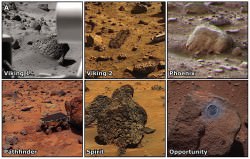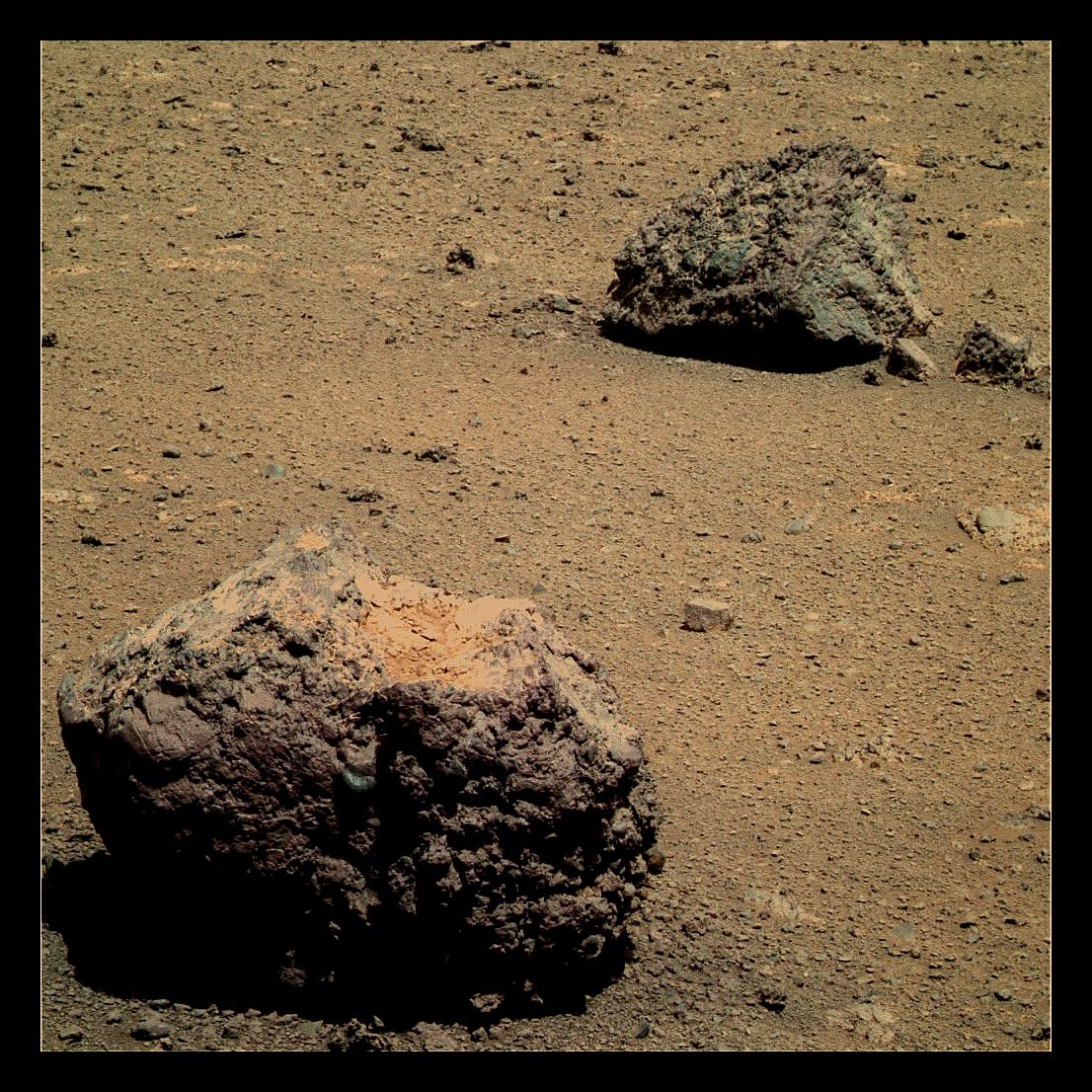[/caption]
There are many ways rocks can be textured. Wind erosion, water erosion, the escape of volcanic gases during their formation (in the case of igneous rocks)… all these forces can create the pitted textures found on many rocks on Earth… and perhaps even on Mars. And according to a report published by a group of planetary geologists led by James Head of Rhode Island’s Brown University, another method may also be at play on Mars: melting snow.
Here on Earth in the hyper-arid dry valleys of Antarctica, water from melting snow erodes the surfaces of dark boulders, creating pitted textures similar to what has been found at many locations on Mars.
In order for that process to be truly analogous, though, a few conditions would have to be met on the red planet. First, the atmospheric pressure must be high enough to allow water to remain – if only temporarily – in a liquid state. Water that instantly boils away won’t have enough time to chemically attack the rock. Second, the rock itself must be at least warm enough to not freeze the water (again, must be liquid.) And third, there must actually be water, snow or frost present.
 While one or more of these factors may be currently present in locations on Mars, they have not yet been found to exist all together in the same place. But that’s just what’s been found now… in Mars’ geologic past these may all have very well existed either in isolated locations or perhaps even planet-wide.
While one or more of these factors may be currently present in locations on Mars, they have not yet been found to exist all together in the same place. But that’s just what’s been found now… in Mars’ geologic past these may all have very well existed either in isolated locations or perhaps even planet-wide.
The paper’s abstract states:
For example, increases in atmospheric water vapor content (due, for example, to the loss of the south perennial polar CO2 cap) could favor the deposition of snow, which if collected on rocks heated to above the melting temperature during favorable conditions (e.g., perihelion), could cause melting and the type of locally enhanced chemical weathering that can cause pits.
In other words, if the dry ice at Mars’ south pole had melted at one point, freed-up water vapor could have fallen on rocks elsewhere as snow. If Mars were at a point in its orbit closest to the Sun and therefore experiencing warmer temperatures the snow could have then melted – especially upon darker rock surfaces.
Still, it’s possible – or even probable – that the weathering did not occur at a consistent rate across the entire surface of the rocks. Some sides may have weathered faster or slower than others, depending on how they were exposed to the elements. But if there’s one thing Mars has had a surplus of, it’s time. Even if the processes outlined in the report are indeed the cause of Mars’ pitted rocks, they have likely been in play over many hundreds of millions – even billions – of years.
Read the team’s report on the Journal of Geophysical Research here.
Thanks to Stu Atkinson for his color work on the images from Opportunity. Check out his blog The Road to Endeavour for updates on the rover’s progress.

